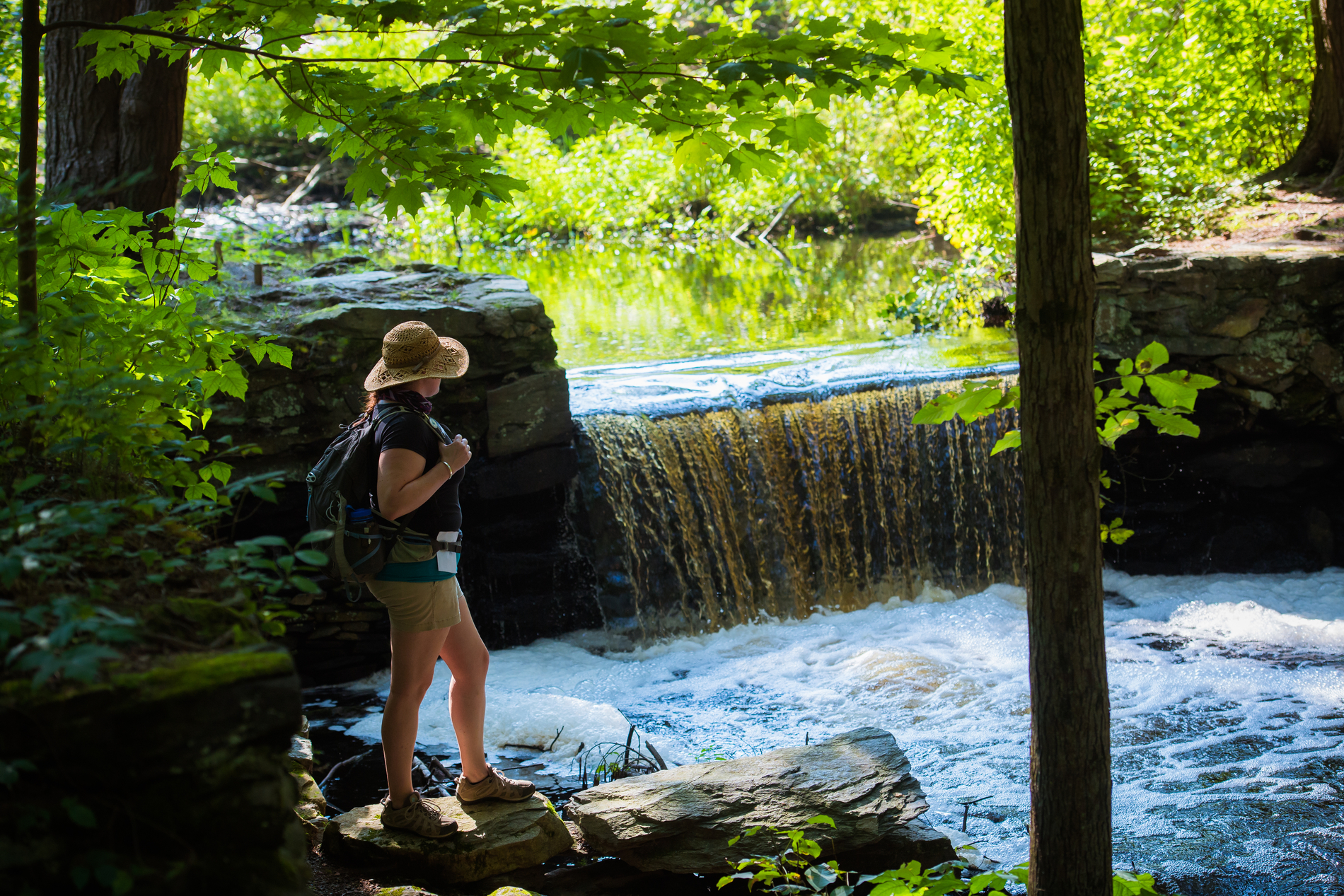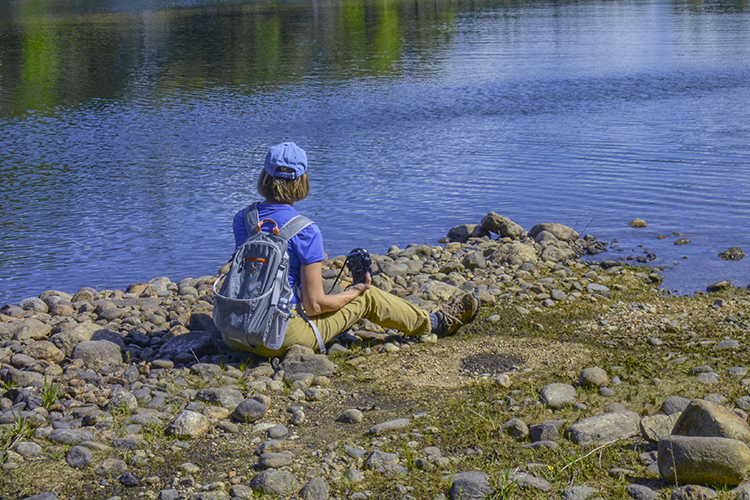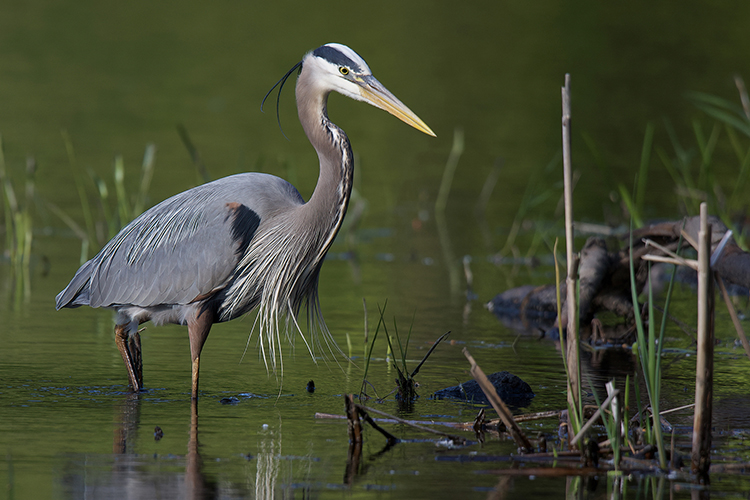Picture a favorite place of yours in nature: a scenic lookout, perhaps, or a quiet bench in a nearby park, or even your own backyard. Close your eyes and really transport yourself to that location in your imagination. Take a deep breath.
How do you feel? A little more relaxed and peaceful?
Science supports what we intuitively feel—nature is good for us. There are numerous ways that nature supports our well-being, directly and indirectly. And researchers are still investigating the ways in which nature provides health benefits. For example, why do some people perceive reduced stress after listening to birdsong? Are some birds' songs more restorative than others? Are certain habitats more calming than others?
While science is still unfolding the "how" and the "why," we can adopt habits now that support personal well-being and nature for the benefit of both.
Nature Mindfulness Practices You Can Try
1. Find a Secret Spot
A "sit spot" (or secret spot) is a favorite place in nature that you visit regularly to cultivate awareness as you expand your senses and study the patterns of local plants, birds, trees, animals, and weather. It doesn’t have to be the same spot every day, but many people choose a single outdoor place to revisit, as consistency can offer a day-to-day perspective of subtle shifts through the seasons and even years.
For some, a simple ritual of sitting on the front porch with a cup of coffee listening to the birds is a form of sit spot practice. Nearby spots are easier to visit more frequently, but you may choose a location for viewing specific wildlife or for solitude away from human activities.
Once you choose a spot, you may sit, stand, lie down—really any position that is comfortable and safe. Plan to spend at least five but preferably more than 15 minutes in your chosen location so that you can fully settle into place. Feel the ground beneath you. Take 5 to 10 deep breaths. Soften your gaze by relaxing your focus to expand your field of vision. Pay attention to sound and movement. Feel the wind on your face. Acknowledge discomfort—mosquitoes, chilly toes, and a muddy backside can all be part of the sit spot experience.
As you deepen your awareness of the present moment, you will begin to notice the plants and wildlife that inhabit your sit spot. Journaling or sketching can be enjoyable tools to accompany a sit spot practice.
2. Listen to the Dawn Chorus
At any time of day, find a spot where you can sit or stand comfortably outdoors or even near an open window. Close your eyes and take 5 to 10 deep breaths to settle into the space. Feel the ground beneath you. Open your ears to the sounds all around you. Let the sounds "wash" over you without focusing on any one sound. Listen to the symphony, rather than the solos.
Then, if you find yourself drawn to a particular sound, narrow your entire focus to that sound and get curious—pay attention to rhythm, quality, and speed. What is the direction of the sound? Distance?
Let go of the singular sound and widen your listening again. Let the full symphony envelop you. Take 5 to 10 more deep breaths. Take notice—do you feel the same or different as you did when you began? Repeat as many times as you'd like. When you are finished, gently open your eyes with a soft gaze.
3. Mindful Walking
Have you ever watched a Great Blue Heron wading stealthily through cattails at the edge of a wetland? They lift one of their long legs, bending carefully at the joint and slowly . . . ever so slowly . . . step forward. Each step is carefully and quietly placed. Sometimes they freeze—one-legged—in a dramatic pause.
Mindful walking emulates this behavior and involves paying attention to every step before, during, and after you take it. Feel the ground firmly beneath both feet (you can even try this barefoot). Then slowly lift one foot, feeling the ground move away from the sole.
Now imagine the precise location on the ground where you will place the lifted foot. Then, feel the slow and deliberate placement of your sole back onto the ground. Repeat. For an added challenge, try closing your eyes.
More to Explore
Incorporating mindful awareness of the environment into our modern lives helps to build a connection to place, wherever we are. The benefits are mutual—time spent mindfully in nature increases our well-being, as well as our desire to protect and steward natural places both for wildlife and for ourselves. Next time you're outside, incorporate these mindfulness practices into your journey or join us in a program for a guided experience.
Upcoming Nature & Mindfulness Programs
See MoreYoga on the Trails
-
Wachusett Meadow Wildlife Sanctuary, Princeton
-
Sunday, January 11
10:00-11:30am
Adults
Yoga in the Barn
-
Ipswich River Wildlife Sanctuary, Topsfield
-
Thursday, January 15
9:00-10:00am
Adults
YCLP Guest Speaker Talk with Alex Schwartz from Mass Clean Energy Center
-
Online
-
Tuesday, January 20
5:45-6:45pm
Age 13 - 17
Yoga in the Barn and Winter Meditative Hike
-
Ipswich River Wildlife Sanctuary, Topsfield
-
Thursday, January 22
9:30-11:00am
Adults
Nature and Wellness: Winter Series
-
Boston Nature Center and Wildlife Sanctuary, Mattapan
-
3 classes starting
Thursday, January 22
10:30am-12:00pm
Adults
Nature and Wellness: Winter Wild Edibles and Tea
-
Boston Nature Center and Wildlife Sanctuary, Mattapan
-
Thursday, January 22
10:30am-12:00pm
Adults
Stay Connected
Don't miss a beat on all the ways you can get outdoors, celebrate nature, and get involved.





